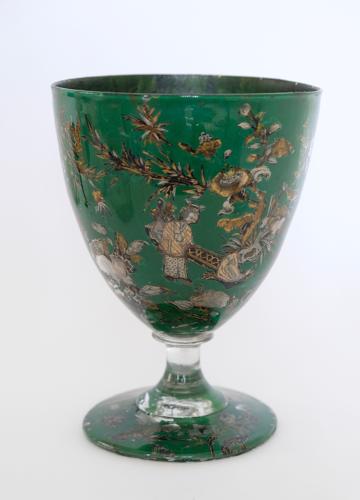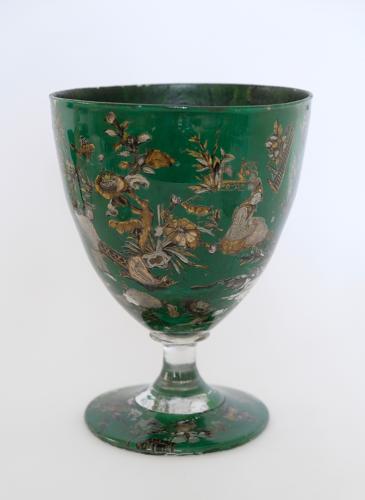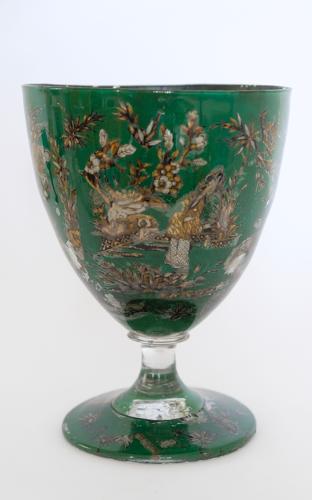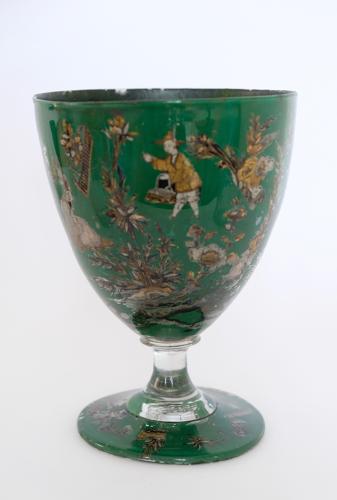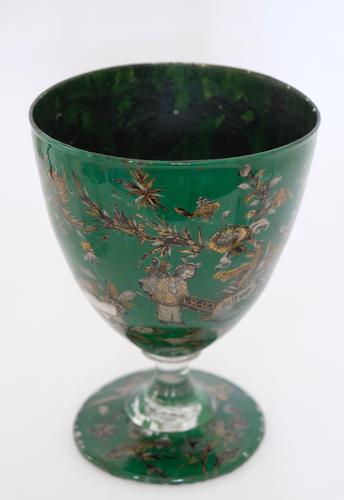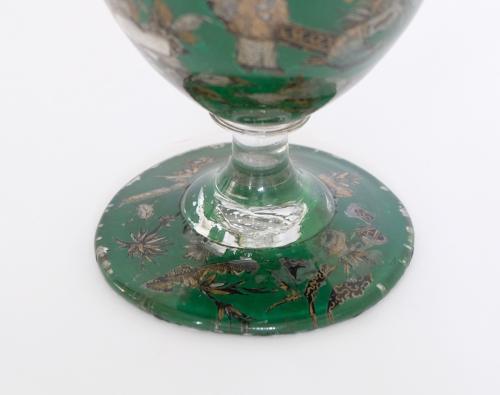Decoupage rummer C1790
Large ovoid rummer English C1790. The bowl and foot with Chinoiserie reverse decoupage decoration. Chinoiserie is the European interpretation and imitation of Chinese artistic traditions, especially in decorative arts and garden landscapes. The chinoiserie decoration on this glass features figures in a landscape of flowering cherry trees, coloured in gold, silver and black against a green background.
Decoupage is the art of decorating an object by glueing coloured paper cutouts onto it, combining special paint effects, gold leaf and other decorative elements. It is more commonly seen on small objects or an item of furniture. However, it can be found on glass, usually witches balls or glass rolling pins and but rarely seen on a drinking glass of this period.
The word decoupage comes from Middle French "decouper", meaning to cut out or cut from something. The history of découpage can be traced back as far as China in the 12th century where Chinese peasants used to cut out coloured paper to decorate windows, lanterns and boxes. In 17th century Italy, Venice in particular, was at the forefront of trade with the Far East and it is generally thought that it was through these trade links that the cut out paper decorations made their way into Europe
The practice is thought to have been popularised in England by Mrs Mary Delaney 1700 to 1788. Mrs Delaney was well connected being a close friend of King George III and Queen Charlotte. Mary produced beautiful and delicate botanically accurate images of plants and flowers by cutting up hand coloured tissue paper which she called ‘paper mosaics’. https://www.britishmuseum.org/pdf/Mrs_Delany_factsheet.pdf
Decoupage is a popular craft and is still practised today.
